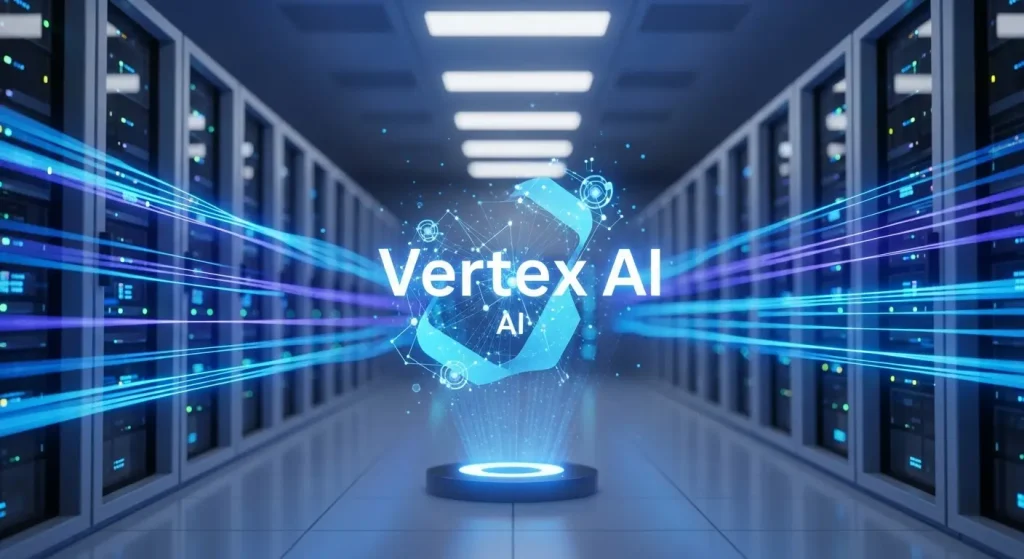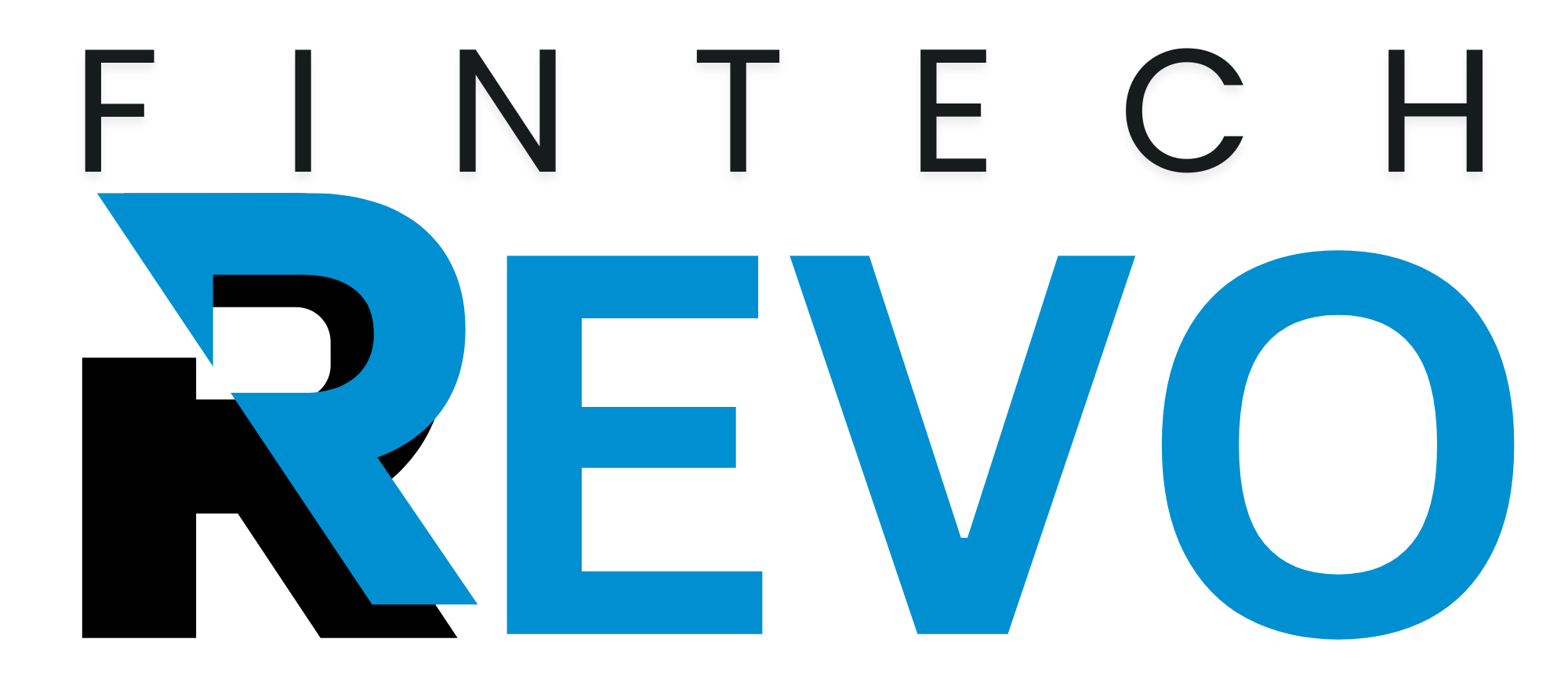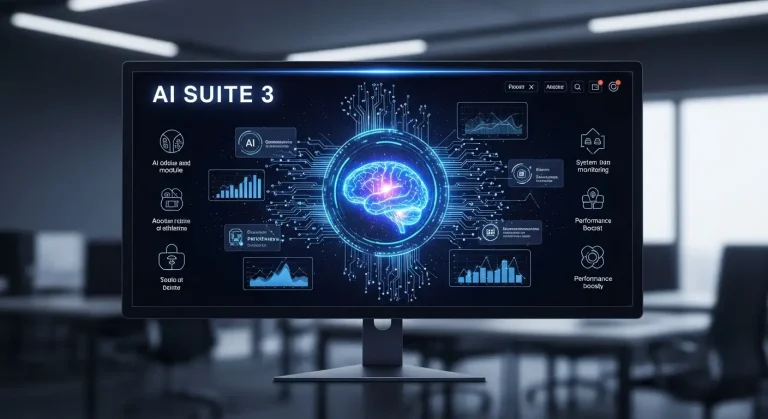Vertex AI is Google Cloud’s managed platform for developing, training, and deploying artificial intelligence models within a single, integrated environment.
It’s designed to streamline every stage of an AI project — from data preparation to model monitoring — so teams can move from experimentation to production without the usual technical friction.
Why Google Built It
Modern AI development involves countless moving parts — data pipelines, frameworks, and hardware configurations. Before Vertex AI, Google’s ecosystem offered these capabilities through multiple standalone services, which made scaling and maintenance difficult.
By combining them into one platform, Google created a workspace where engineers and data scientists could collaborate, automate repetitive tasks, and rely on managed infrastructure instead of maintaining their own.
This approach saves time, reduces cost overheads, and allows teams to focus on improving model performance rather than server management.
What It’s Actually Used For

The platform serves as the foundation for a wide range of machine-learning and generative-AI applications:
- Predictive Modelling: Forecasting sales, analysing risk, or identifying patterns in data.
- Generative Projects: Creating text, images, or video using foundation models like Gemini.
- Conversational Agents: Building chatbots and support systems that understand natural language.
- Semantic Search: Powering retrieval-based systems that return meaningfully similar results rather than exact matches.
- Recommendation Engines: Matching users to products, services, or content using vector-based similarity.
In essence, Vertex AI brings these capabilities together so they can operate under one roof with enterprise-grade scalability.
Core Components Behind the Platform
Although it works as one cohesive system, several parts operate together to deliver its functionality:
Workbench
An interactive environment for exploring and processing data. It integrates with BigQuery and Cloud Storage, providing immediate access to data sources without manual setup.
Pipelines
These define repeatable workflows for data transformation, training, and deployment. They allow AI models to evolve continuously while maintaining version control and traceability.
Model Registry
A library that tracks every experiment, performance metric, and deployed version. It helps avoid confusion between test and production models.
Studio
A workspace for building and fine-tuning generative models. It’s ideal for experimenting with prompts, adjusting parameters, and previewing results before deploying them into an app.
Agent Builder
This tool helps developers create intelligent agents and chat interfaces using large-language models and structured data sources.
Vector Search
A managed service for indexing and retrieving high-dimensional data using vector embeddings. It’s what powers recommendation systems, semantic document search, and retrieval-augmented generation.
Visit FinTechRevo.com for more amazing Ai tools.
Managed Datasets
Data drives everything here. Instead of leaving you to organise files manually, the system uses managed datasets. These maintain metadata, schema validation, and versioning automatically — ensuring consistency across projects and retraining cycles.
This feature becomes essential when multiple teams are working on the same datasets, reducing duplication and human error.
How Vector Search Works
Traditional search engines rely on keywords, but this approach uses numerical representations (vectors) to measure semantic similarity.
It compares how close those vectors are in multidimensional space to return the most relevant matches.
The underlying algorithm — often ScaNN — is known for balancing speed and accuracy when working with millions of data points.
That’s why it’s ideal for recommendation systems, image matching, and retrieval-augmented applications where meaning matters more than exact wording.
Building a Search Application
A simplified process for using this feature looks like this:
- Prepare data in a structured format.
- Generate embeddings using a pre-trained model.
- Create an index inside Vertex AI’s Vector Search service.
- Send a query vector to find semantically similar results.
- Return and integrate results into a recommendation or generative-AI pipeline.
This workflow enables smarter, more contextual search experiences across industries.
How It Relates to Gemini

Gemini represents Google’s family of large foundation models capable of reasoning, writing, and creating multimodal content. Vertex AI is the environment that allows users to train, tune, and deploy those models securely.
To put it simply: Gemini is the brain, while Vertex AI is the platform that connects that brain to real-world applications.
Integration Inside Google Cloud
The platform works seamlessly with other Google Cloud components such as:
- BigQuery for analytics and large-scale data storage.
- Cloud Storage for managing raw and processed datasets.
- Dataflow for large-volume data transformations.
- AI APIs like Vision and Speech for task-specific use cases.
This tight integration means everything — from ingestion to inference — happens inside the same ecosystem.
Example Use Cases
- Retail: Predicting stock levels or generating personalised product recommendations.
- Healthcare: Analysing diagnostic imagery for early detection.
- Finance: Detecting fraud and scoring credit risk.
- Manufacturing: Monitoring equipment performance to prevent downtime.
- Customer Service: Deploying chat agents that reduce human workload.
Each of these examples benefits from managed scalability, automation, and continuous monitoring.
Advantages
- Unified workspace covering the entire AI lifecycle.
- Managed infrastructure that scales automatically.
- No-code and custom-code flexibility.
- Built-in monitoring for data drift and model decay.
- Direct access to foundation models through the Model Garden.
Key Considerations
- Pricing depends on compute usage and storage requirements.
- Teams need basic familiarity with Google Cloud permissions and billing.
- Well-designed pipelines are vital to control cost and maintain performance.
- Custom models may require tuning to handle extremely large datasets.
Getting Started
To experiment with the platform:
- Enable the service in your Google Cloud console.
- Upload a sample dataset and explore it through Workbench.
- Train a model using AutoML to see how the process works.
- Register and deploy that model using the built-in tools.
- Set up monitoring and schedule retraining as data evolves.
Once you’ve mastered the basics, you can explore advanced modules such as Vector Search, Studio, and Agent Builder.
Final Thoughts
Vertex AI is more than a tool — it’s an ecosystem that turns artificial-intelligence ideas into operational systems.
By merging model training, data management, and generative workflows within Google Cloud, it gives developers and businesses a clear path from experimentation to production.
Whether you’re creating predictive analytics, intelligent search, or conversational experiences, this platform provides the structure, scalability, and reliability to make it happen — all without the burden of managing infrastructure yourself.






